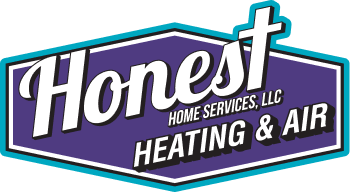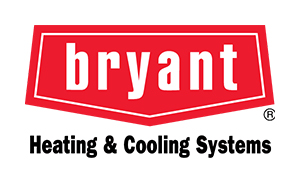If your Flower Mound, TX, home has a forced-air HVAC system, it may not heat and cool your home evenly. The reason has to do with a shortcoming in the way central ducted HVAC systems function. They use a single set of ductwork and a single thermostat to control their functioning.
However, it’s common for different parts of your home to have different HVAC needs. To address uneven heating and cooling, an HVAC technician has to balance the ductwork to distribute conditioned air where needed. However, there’s a better option. It’s called a zoned HVAC system. Here’s everything you need to know about zoned HVAC systems and why you might want one.
What Is a Zoned HVAC System?
Conventional ducted central HVAC systems rely on a centrally located thermostat. Ideally, your thermostat should be in a part of your home, representing the average indoor temperature. Even so, your home likely experiences temperature differentials of up to two degrees in different locations. That’s about as even as you can expect temperatures with a conventional ducted HVAC.
A zoned HVAC system offers much more even heating and cooling throughout your home. It does this by splitting your home up into two or more zones. To do this, an HVAC technician would install electrically-controlled dampers that split your ductwork into smaller sections. In a zoned HVAC system, you’d also have a thermostat inside each zone. Those thermostats connect to a control board on your HVAC’s indoor unit. That board also controls the dampers. When one zone calls for heating or cooling, the control board opens its damper and closes the others. Then, it tells your HVAC to turn on. It’s like having multiple HVAC systems serving different parts of your home.
The Advantages of Zoned Hvac
The most important advantage of zoned HVAC is that it increases the comfort of your home. By targeting where and when to send conditioned air, you’ll experience much more even temperatures. A zoned system will also improve your HVAC’s overall efficiency. Your overall efficiency is improved because it helps you avoid overheating or overcooling parts of your home that don’t need it. As a result, your HVAC won’t run as often or for as long. According to the US Department of Energy, a zoned HVAC can use up to 30% less energy than a single-zone HVAC.
The decreased runtime of your HVAC will also spare it significant wear and tear. That will lead to an increased lifespan for your HVAC. That makes a zoned system an excellent way to protect your investment in your HVAC system. It also helps reduce your HVAC maintenance and repair costs overall.
The Disadvantages of Zoned Hvac
Zoned HVAC systems also have some disadvantages. One is that installing a zoned HVAC system can be costly. The costs increase based on how many zones you want. Cost increases per zone because each zone needs a thermostat, an electrically-controlled damper, and all the wiring that supports them. Also, having a zoned HVAC system increases its complexity. That can mean higher one-off repair costs when a component fails.
The Process of Installing a Zoned HVAC System
If you want to retrofit your existing HVAC system to create a zoned HVAC system, we can help you. Our expert HVAC technicians will follow a specific set of steps to get the job done:
Evaluating Your Existing System
The first step in installing a zoned HVAC system in your home is evaluating your existing system. Our installer will need to assess its capabilities and inspect your ductwork. If your ductwork is in disrepair, our technician will recommend that you address the problem before processing. They’ll also check out the capabilities of your HVAC blower fan to determine how many zones your HVAC system can reasonably support.
Planning Your Zones
Next, our technician will work with you to decide how many zones your home needs. Most homes work well with two zones that split the HVAC into upstairs and downstairs. There are other considerations, however. For example, if parts of your home get more sun than others, it may impact your zone planning, too. They will also discuss your comfort preferences to ensure your new zones keep you comfortable.
Choosing Thermostat Locations
With the number and location of zones decided, the next step is determining where to install each zone’s thermostat. Ideally, each thermostat should be as close to the center of its zone as possible. It should also avoid vents, direct sunlight, and potential heat sources. That will ensure that the thermostat gets accurate temperature readings at all times.
Identify Ideal Damper Placement
Next, our technician will examine your HVAC ductwork to identify the ideal placement for the dampers. In most cases, installing all of the required dampers near your indoor HVAC unit is possible. However, if your home has unique zoning requirements, installing a damper or two elsewhere may be necessary. For example, if you need to split a single ductwork branch into two, you could need a damper further from your HVAC.
Installation and Wiring
With planning completed, our technician will install the necessary hardware and wiring, including the zone control board, thermostats, and dampers. Once everything’s in place, they’ll test your system and make any necessary adjustments. This may include calibrating your thermostats and adjusting the dampers to allow for proper airflow.
Other Hvac Zoning Considerations
It’s worth pointing out that there’s more than one way to add zoned heating and cooling to your home. You could also install a ductless mini-split system to add that functionality. A ductless mini-split can support even more zones than most ducted HVAC systems. Since they rely on multiple indoor air handlers, you can install one anywhere you want a zone located. Each air handler has its thermostat and controls. In this way, ductless systems offer even more efficiency and comfort control than a ducted-zoned system.
You should also know that zoned HVAC systems work best with multi-stage HVAC systems. Multi-stage HVAC systems allow your HVAC to reduce output to support each zone. With a single-stage system, your HVAC will run at full capacity even when only one zone needs HVAC. Although you’ll still save energy through decreased demand, you will waste energy, too, through unnecessary HVAC capacity.
Your Hvac Zoning Specialists
If you want a zoned HVAC system for your Flower Mound home, Honest Home Services LLC is the HVAC contractor to turn to. Our HVAC technicians have the training and skills to retrofit your existing HVAC to add zoning. They can also install a brand-new HVAC system with zoning capabilities if you need one. With over 20 years of industry experience on staff, we can be the only HVAC zoning solution provider you need.
Plus, we offer comprehensive HVAC installation, maintenance, and repair services. We also provide indoor air quality solutions and commercial HVAC services. And as a NextDoor Fave, you can call us confidently, knowing that your neighbors love us. So, if you need a zoned HVAC system in Flower Mound, call Honest Home Services LLC today!





